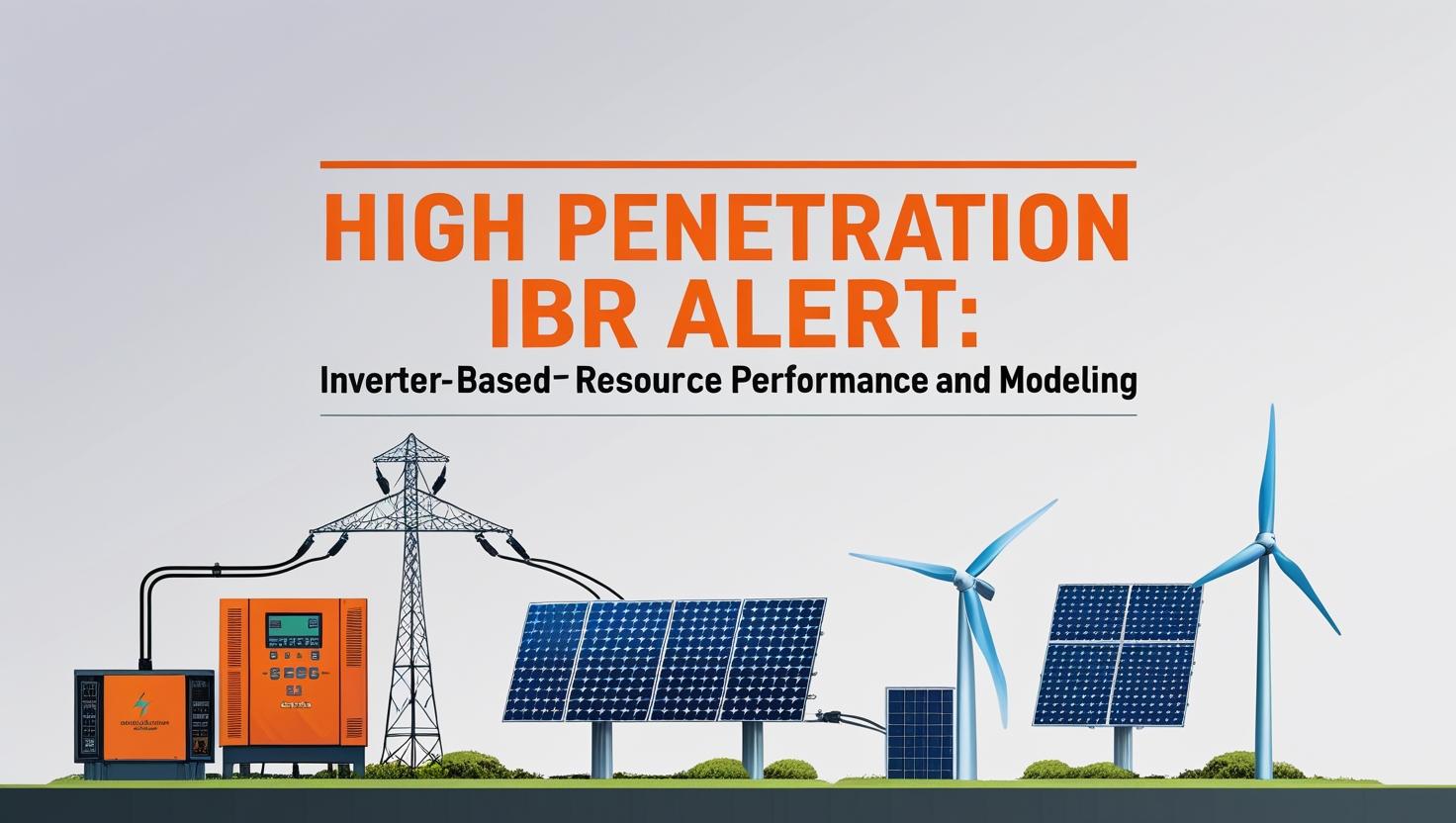1. Background and Rationale
On May 20, 2025, the North American Electric Reliability Corporation (NERC) issued a Level 3 Alert – Essential Actions regarding the performance and modeling of Inverter-Based Resources (IBRs) such as wind, solar, and BESS. This is the highest alert level, reserved for situations with a potential to significantly impact the reliability of the Bulk Power System (BPS).
Since 2016, NERC has recorded numerous major system events that resulted in over 15,000 MW of unexpected generation loss from IBRs. Alarmingly, these events were not anticipated by existing planning procedures, and technical simulations were unable to replicate the actual behavior of the system and equipment, revealing systemic deficiencies in the modeling and assessment of IBRs.
Furthermore, findings show that previous technical recommendations from NERC were largely unimplemented by Generator Owners (GOs), and many entities could not provide basic technical information about their equipment—resulting in very low data submission rates during earlier Level 2 Alerts. This trend presents an increasing threat to system reliability as IBR penetration continues to grow.
.
2. Essential Actions Required
Under this Level 3 Alert, NERC requires registered entities—including Transmission Owners (TOs), Transmission Planners (TPs), Planning Coordinators (PCs), and Generator Owners (GOs)—to undertake mandatory actions aimed at improving IBR model quality and performance, as detailed below:
2.1. Actions for TOs, TPs, and PCs
Action #1: Strengthen Interconnection Requirements and Performance Expectations for IBRs
Update and publicly publish detailed technical requirements for:
- Voltage and reactive power control modes, including voltage deadbands, voltage droop slopes, reactive power limits, and control/measurement points.
- Frequency response control, including frequency deadbands, droops, ramp rate limits, and other relevant control parameters.
- Voltage and frequency ride-through capabilities, including use of measurement filters and time delays to avoid unnecessary tripping.
- Post-disturbance recovery requirements, including the expected speed and magnitude of recovery for active power, reactive power, and voltage.
- Reactive power capability within the continuous operating voltage range.
Action #2: Enhance Model Quality and Validation Practices
-
Establish robust model validation criteria:
- Require generation facilities to submit model validation reports from OEMs (covering both EMT and RMS models).
- Review the alignment between model parameters and field-configured settings.
- Require performance tests consistent with published expectations.
- Implement feedback mechanisms to ensure design changes in IBRs are accurately reflected in the submitted models.
Action #3: Review and Correct Existing IBR Models
-
- Assess the actual performance of existing IBRs in operation and compare against submitted models.
- Confirm and update models if discrepancies are found.
- Communicate model changes to all relevant stakeholders to ensure consistency in evaluation and operational planning.
2.2. Actions for Generator Owners (GOs)
Action #4: Establish Internal Processes to Ensure Model Fidelity and Updates
- Require inverter and plant controller manufacturers to provide:
-
-
EMT model validation reports based on field measurements.
-
Comparison between EMT and standardized RMS models.
-
- Ensure that the final control design is locked prior to interconnection.
- Conduct conformity assessments to verify that installed systems match what was modeled and studied.
- Strengthen model change management:
-
-
Track firmware updates and prevent unintentional resets to default values that may desynchronize model accuracy.
-
Notify planning and operating entities of any changes affecting performance.
-
Maintain a centralized technical data archive, including firmware versions, reactive power capabilities, protection settings, control strategies, and other critical model-related parameters.
-
3. Implications for the Vietnamese Power System
Vietnam’s power system is undergoing a profound energy transition, characterized by rapid growth of renewable energy resources connected via inverters (IBRs). According to data from the Ministry of Industry and Trade and EVN, by the end of 2024, the total installed capacity of solar, wind, and energy storage exceeded 20,000 MW, interconnected across various voltage levels—22 kV, 35 kV, 110 kV, 220 kV, and 500 kV
Given this context, Vietnam’s grid faces urgent needs to:
-
Standardize IBR modeling practices and model validation procedures.
-
Establish mandatory technical requirements related to voltage control, frequency response, and fault ride-through capability.
-
Develop a centralized model change management system and IBR technical database, enabling EVN, dispatch centers, consultants, and planners to access, verify, and track system performance in real-time
The NERC Level 3 Alert serves as a valuable technical benchmark to guide Vietnam in shaping its regulatory, technical, and operational frameworks for safe and reliable grid integration of high-penetration IBRs..
👉 Reference Document from NERC: https://www.nerc.com/pa/rrm/bpsa/Alerts%20DL/Level%203%20Alert%20Essential%20Actions%20IBR%20Performance%20and%20Modeling.pdf


 VN
VN